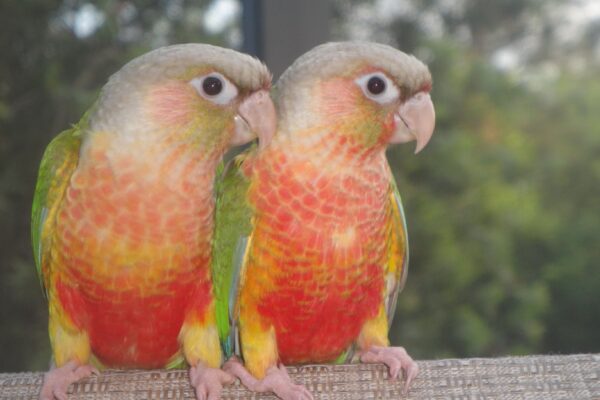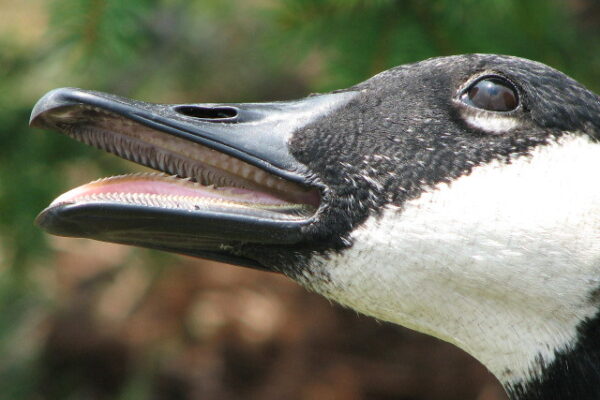Throughout Disney’s cherished animated masterpiece, The Lion King, birds perform noteworthy roles, from soaring through the famous opening sequence to acting as comedic relief sidekicks. The feathered inhabitants of the African savanna, which range from shrewd hornbills to sly vultures, provide fun and color.
All of the bird characters will be identified in this article, along with their importance and some unexpected information about the avian stars.
In case you’re pushed for time, buzzard-like vultures play the role of Simba’s silly friends, while a red-billed hornbill named Zazu is King Mufasa’s majordomo.
Zazu: The Conscientious Hornbill
One of the most adored characters from Disney’s The Lion King is Zazu, the hornbill. He acts as King Mufasa’s obedient majordomo and then Simba’s as well. Zazu is a memorable character in the movie because of his maturity and steadfast dedication.
The Loyal Subject of Mufasa
Zazu is shown as King Mufasa’s obedient vassal and reliable counsel. He makes sure that everything in the Pride Lands is operating well at all times, taking great pride in his position as the king’s majordomo. Zazu is really committed to his work and often goes above and above to complete his tasks.
One of Zazu’s most significant responsibilities is to advise Mufasa with essential information on events occurring in the kingdom. He alerts the monarch to any possible dangers or problems while keeping a close watch on the Pride Lands.
This degree of focus and dedication to his work demonstrates Zazu’s desire to uphold the pride and support his monarch.
Funny Bone to the Cubs
Even though Zazu is a responsible and serious character, he also brings some comedy to the movie. He often finds himself in humorous circumstances where he plays a comedic counterpoint to Simba and Nala, the rambunctious cubs.
Throughout the film, there are humorous and lighter moments brought about by Zazu’s efforts to discipline the young lions.
Even though Zazu is the voice of reason, the cubs often oppose his attempts to keep the peace. They often figure out how to outwit him since they see him as a barrier to their experiences.
Zazu’s persona is enhanced by the pleasant dynamic that arises from his interactions with the cubs.
Title Is “Movement”
The character’s importance is further enhanced by the intriguing meaning of the name “Zazu.” “Zazu” means “movement” in Swahili, a language spoken throughout portions of Africa. The hornbill’s moniker is appropriate given his continual mobility in carrying out his tasks and making sure the Pride Lands run smoothly.
Furthermore, Zazu’s name conveys his upbeat nature and flexibility in many circumstances. Zazu’s persona is never still, like a bird in flight, never being still for an extended period of time. His part in the movie gains further depth from this symbolism.
Vultures: The Funny Clean-Up Team
The vultures are without a doubt one of the most famous bird species in Disney’s The Lion King. These avian beings contribute significantly to the Circle of Life and provide humorous respite. With their broad wingspan and pointed beaks, these vultures may seem frightening to some, yet they have a vital role in the animal kingdom: they clean up after other animals.
Timone’s Allies with Pumba
The vultures are shown in The Lion King as Timone and Pumba’s pals, the endearing warthog and meerkat pair. Despite playing completely different functions in the ecosystem, the vultures are often shown hanging out with their new buddies, which lends an added humorous aspect to these odd partnerships in the movie.
The vultures, who often prey on Timone and Pumba’s innocence, provide a humorous counterpoint to their carefree and reckless behavior. Throughout the film, this dynamic produces amusing moments that highlight the vultures’ adaptability to various circumstances and their interactions with other people.
Unintelligent But Generous
Although the vultures in The Lion King are shown as ignorant and a little foolish, they also have good intentions. These birds are shown as misunderstood beings attempting to find their place in the Pride Lands, despite their appearance as scavengers.
The vultures are likable and accessible because of their charming pranks and kind connections with other characters. They serve as a reminder that people may make friends in the most unlikely places and that looks can be misleading.
Based on the Griffon Vulture of Ruppell
The Ruppell’s Griffon Vulture is a real-life animal that served as the model for the vultures in The Lion King. These vultures are indigenous to Africa and distinguished by their enormous wingspan and scavenging tendencies.
While the film’s depiction of vultures may exaggerate their features for humorous effect, it’s fascinating to note that Disney took influence from actual birds when designing these characters. This meticulous attention to detail highlights Disney’s dedication to producing believable and endearing animal characters and gives the film an additional degree of realism.
Visit the All About Birds website to learn more about the Ruppell’s Griffon Vulture.
Additional Birds of Prey from Pride Rock Tropical Birds in “I Can’t Wait to Rule”
“I Just Can’t Wait to Be King,” a sequence from Disney’s The Lion King when Simba and Nala travel through a colorful forest full of exotic birds, is one of the film’s most memorable moments. The song and the whole film get an additional dose of zest and energy from these vibrant and animated animals.
Although the exact kinds of birds in this picture are not identified, it is probable that they were influenced by the wide variety of bird life that can be seen in African rainforests.
“Can You Feel the Love Tonight” with Flamingos
The famous “Can You Feel the Love Tonight” passage is another fantastic scene from The Lion King. Accompanying Simba and Nala on their love voyage is a group of elegant flamingos.
Flamingos are a great option to accentuate the beauty and romance of this picture because of their characteristic pink feathers and graceful motions. Even though they are not indigenous to African savannas like Pride Rock, flamingos provide a magical element to the film.
Ostrich as a Snack for Shenzi
A hilarious and somewhat macabre scene in The Lion King has Shenzi, the hyena, trying to eat an ostrich. The significance of ostriches in the Pride Lands’ varied biodiversity is seen in this scenario.
The biggest birds in the world, ostriches are renowned for their remarkable speed and forceful kicks. The ostrich in The Lion King shows the natural dynamics and relationships between many species in the animal world, even if it just misses being Shenzi’s dinner.
Go to www.disney.com for additional details about the birds that are featured in The Lion King movie.
Origins & Inspirations: The Story Behind the Feathers
Disney’s The Lion King’s bird characters are a fascinating mix of real-world species and cartoonish elements that make them come to life. The film’s designers drew inspiration from a variety of bird species, giving them oversized characteristics and behaviors to make them immediately recognized and unforgettable.
Combining Cartoon Characteristics With Real Species
The way the birds in The Lion King blend elements of cartoonish characteristics with actual species is one of their most amazing features. For instance, the red-billed hornbill, an African native bird, serves as the model for Zazu, the stiff and obedient adviser to King Mufasa.
But despite his vibrant feathers, big beak, and humorous emotions that provide the movie a whimsical feel, Zazu’s persona is overdone.
The cunning trio Shenzi, Banzai, and Ed, who are hyenas but are yet categorized as birds, on the other hand, exhibit traits similar to those of vultures and hyenas. They have a distinct and menacing look due to their hunched postures, pointed beaks, and ruffled feathers.
Extensively studied African birds
The Lion King’s research team studied African birds in depth, paying close attention to every aspect. Their goal was to faithfully depict the variety of birds that may be seen on the African savannah.
They included these details into the animated figures by researching the habits, looks, and habitats of many birds.
For example, the colorful mandrill and the elderly, intelligent baboons are two examples of the African primates that inspire Rafiki, the smart mandrill. Rafiki’s persona was created by the animators after closely examining the motions and facial expressions of these creatures.
The wise and honorable lion king Mufasa is another example. Despite not being a bird, the magnificent eagle that flies above Pride Rock at key junctures in the movie lends a feeling of grandeur and significance.
Mufasa’s leadership position is reflected in the eagle’s representation of power, wisdom, and protection.
Voice Actor Selections
These characters were greatly influenced by the voice performers that were cast to represent The Lion King’s birds. The animated birds gained depth and personality from the distinctive voices and accents, which further enhanced their memorability.
For example, Zazu was a fantastic fit for Rowan Atkinson’s unique British accent, which highlighted his conceited and funny personality. Scar, the evil lion, had a wily and malicious quality to him because to Jeremy Irons’ dark and ominous voice.
Beyond Symbolism to Deeper Intent
Disney’s The Lion King is a touching animated picture with deeper meanings and a ton of symbolism that appeals to viewers of all ages. These themes are mostly communicated by the birds in the film, each of which stands for a distinct facet of life and the human experience.
Zazu Is a Symbol of Accountability
A notable avian figure in The Lion King is Zazu, a red-billed hornbill who acts as King Mufasa’s majordomo. Zazu’s persona stands for accountability and obligation. He always appears with Mufasa and Simba, making sure they are secure.
Zazu’s unshakable dedication to his task highlights how important it is to carry out obligations, especially under trying circumstances. His persona serves as a reminder that everyone of us has a job to perform and that it is our responsibility to carry it out.
Funny Relief Is Provided by Vultures
Against Zazu’s somber and responsible demeanor, The Lion King’s vultures provide much-needed comedic relief. These birds provide fun and lightness to the narrative, with Timon, Zazu’s comic foil, serving as their leader.
The vultures’ lighthearted and humorous dispositions serve as a reminder to laugh and enjoy life, even in the most difficult circumstances. Their appearance in the movie provides some humor and counterbalances the more dramatic scenes.
Birds Stand for Liberty
In The Lion King, birds are also a symbol of freedom. Birds are shown flying through the skies and skimming over the African grassland throughout the whole movie. This artwork exudes freedom and the capacity to overcome obstacles in life.
The ability to roam about, dream, and follow one’s dreams is symbolized by the flight of birds. It reminds us to believe in our own abilities and set goals for ourselves in order to achieve greater things.
The plot of Disney’s The Lion King is made more complex by the symbolism and deeper meanings that the birds reveal. The film’s overarching theme of personal development, resiliency, and pursuing one’s dreams is furthered by Zazu’s portrayal of responsibility, the vultures’ humorous relief, and the birds’ depiction of freedom.
Final Thoughts
The avian inhabitants of the Pride Lands, ranging from the sage hornbill major-domo Zazu to the endearing but vacuous vultures, are important, both humorous and metaphorical, to the cycle of life in The Lion King. The heavens and our hearts are full with their presence.





![Are Dinosaurs Birds Or Reptiles? [Explained]](https://birdsology.com/wp-content/uploads/2024/01/14628.webp-600x400.webp)
